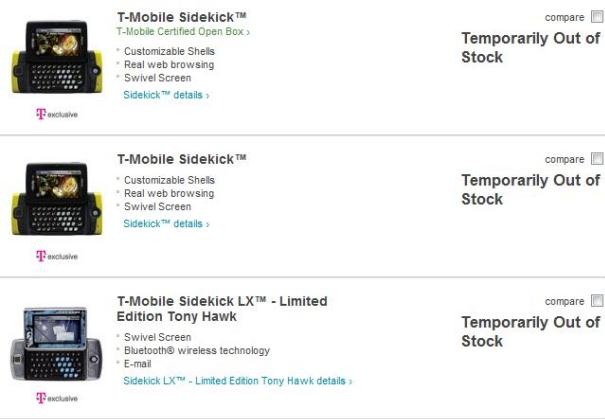6 Ways Backfeed Data Can Boost Your Bid Management
Smart bidding is about matching bids to the value of traffic at the most granular levels: what is this click worth on this keyword, given this user search, from this geography, at this time, on this day? To do this at the highest levels, it is often necessary to pull in data beyond what is […]
Smart bidding is about matching bids to the value of traffic at the most granular levels: what is this click worth on this keyword, given this user search, from this geography, at this time, on this day?
To do this at the highest levels, it is often necessary to pull in data beyond what is available from the engines and typical conversion tracking systems.
Let’s take a look at six types of data that when fed into your paid search bid management will take your program to another level.
1. Product Feed Data
Whether or not a product is in stock will have a tremendous impact on the value of traffic to your business. The historical data will be misleading if temporary stock outages and product discontinuations aren’t known to the system.
- Identify out-of-stock and dropped products. Note: sometimes it is advantageous to advertise on discontinued products if those products have been replaced by a newer model and the site handles those connections well. That said, the value of that traffic will certainly be different than it was prior to discontinuation.
- Identify new products. Use that same product feed to carefully build out new keywords with well thought out landing pages, and copy as new products and categories become available.
- Recognize inventory shortages. Layer in an understanding of the inventory position of each product. This is not simply a matter of counting size variations: being out of shoes sized 7, 8, 9, and 10 is a significantly bigger problem than being out of sizes 5,6,11 and 12.
- Other examples: Which hotels are filling up in the likely shopping window? Which airline routes are booking up?
2. Offline & Cross-Device Conversion Data
People often shop on a website but then call a call center to ask questions, or visit a store for touch, feel or get in-person counseling. Making sure search is credited properly requires going the extra mile.
- Phone tracking. Embed unique ad identifiers on the bottom of web pages. Call center employees ask web callers (unique web phone number) to scroll to the bottom of the page and read off a code.
- Banks of 800 numbers are both more expensive and less granular in their ability to match conversions to ads.
- POS tracking. Unique coupon codes can help catch some of this spillover. Offline to online offers and loyalty programs (“Fill out this survey on our website and get…”) can identify those who had cookies from visits prior to the offline transaction.
- Cross-Device Tracking. Website login data can help tie sessions from different devices together and give a more complete picture of the impact of marketing.
3. Conversion Value Data
The true value of an order may not be apparent at the time of check-out. Back feeds can be used to:
- Knock out frauds and canceled orders.
- Fold in margin data when not available on the site.
- Provide lead valuation data (credit scores, application quality, etc)
- Tie in after-the-fact lead conversion data. Applications that follow leads, accounts created following applications, account funding after creation. All leads are not created equally. Which search ads drive the higher versus the lower value leads?
4. Customer Type Data
Some types of customers are more valuable than others. Knowing what keywords drive what types of customers can be critically important, but you may not have that data available at checkout.
- New customers versus existing customers. Many firms place more value on attracting new customers than generating sales from existing customers. Also, knowing which existing customers use search ads (particularly competitive non-brand search ads) can set up useful tests of offline marketing treatments; maybe those folks don’t need expensive mail pieces to drive those orders?
- Direct-mail match-back data. Who got the last book?
- Small Business vs Medium Business vs Large Business vs Consumer vs Government buyers. The type of customer effects the lifetime value expectation, and different types of buyers often search differently.
5. Customer Value Data
Obviously, customers of the same “type” have different values as well.
- Do people who buy after a search for “discount/cheap foobar” or “foobar coupon deals” buy again from you at an average rate? More? Less? Would knowing the answer effect how much you’re willing to spend to drive those orders?
- Do higher AOVs associated with some keywords also mean the customers generated are more valuable in the long-term as well?
- Do the click-paths followed, inform customer value? Do customers who venture from search to comparison shopping engines or affiliates exhibit the same lifetime value as others? Do those price-shoppers search differently than others?
6. Attribution Credit
If search shouldn’t get all the credit for an order, what fraction should it get? Good attribution systems can feed fractional order information to other systems, and good bid management systems can accept fractional order information from other systems.
Even if attribution systems aren’t sophisticated, passing the channel credited to the search platform can provide improved marketing allocation and provide some interesting insights.
“Have you noticed that half of the orders your last-touch attribution system credits to affiliates have come through competitive paid search ads within 30 minutes of the order?”
Many of these feeds can be set up to run in the background and the results fed dynamically into the bid management algorithms. For some, periodic human analysis and target adjustments based on those analyses may be more practical.
In either case, it’s important to recognize that the simplest view of marketing efficiency may be misleading, and correcting for those assumptions in bid management can make you more money.
Contributing authors are invited to create content for Search Engine Land and are chosen for their expertise and contribution to the search community. Our contributors work under the oversight of the editorial staff and contributions are checked for quality and relevance to our readers. The opinions they express are their own.
Related stories
New on Search Engine Land





